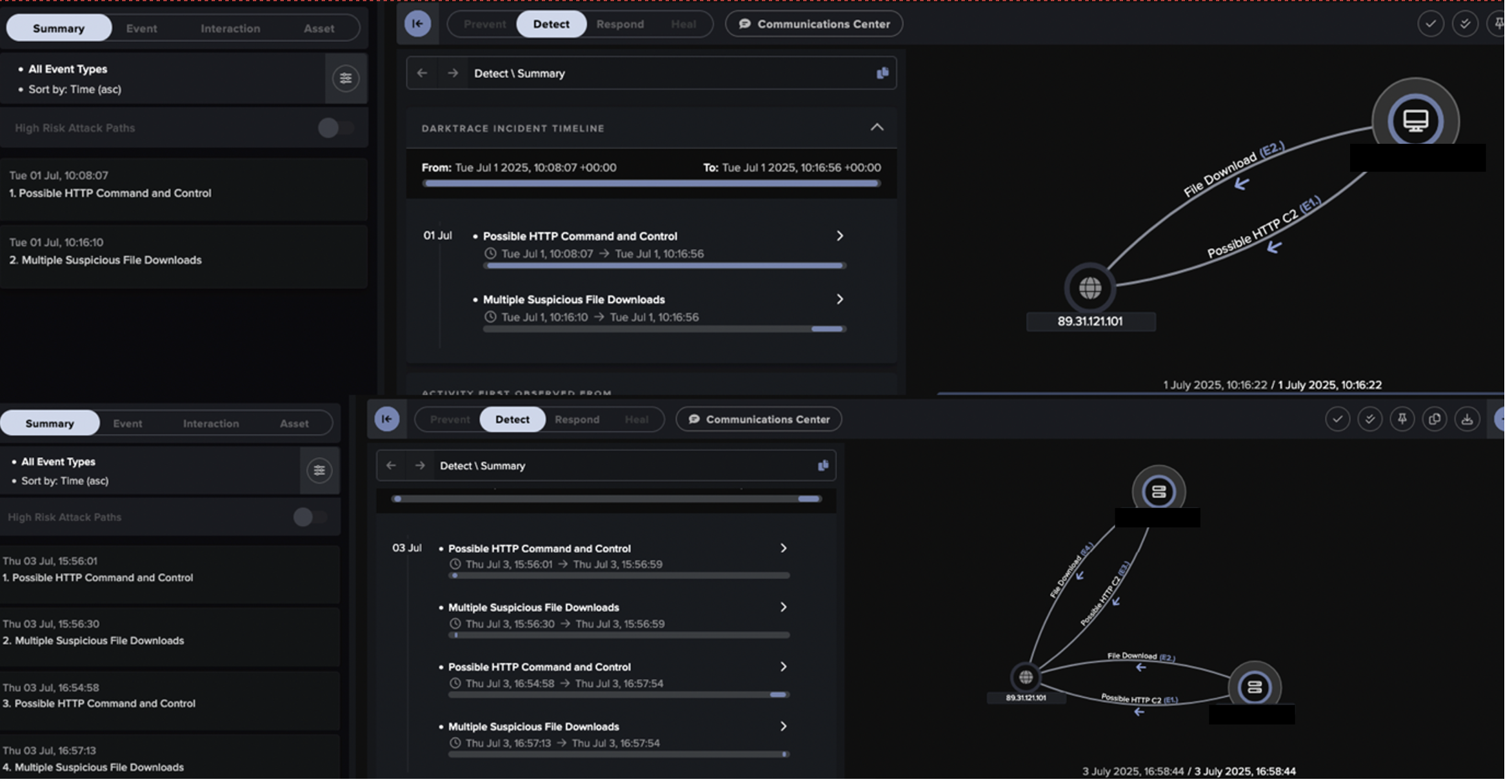We are pleased to announce that Darktrace / OT has been named a Market Leader in Omdia’s 2025 Market Radar for OT Cybersecurity Platforms. We believe this highlights our unique capabilities in the OT security market and follows similar recognition from Gartner who recently named Darktrace / OT as the sole Visionary in in the Magic Quadrant for Cyber Physical Systems (CPS) Protection Platforms market.
Historically, IT and OT systems have been managed separately, creating challenges due to the differences of priorities between the two domains. While both value availability, IT emphasizes confidentiality and integrity whereas OT focuses on safety and reliability. Organizations are increasingly converging these systems to reap the benefits of automation, efficiency, and productivity (1).
Omdia’s research highlights that decision makers are increasingly prioritizing comprehensive security coverage, centralized management, and advanced cybersecurity capabilities when selecting OT security solutions (1).
Rising productivity demands have driven the convergence of OT, IT, and cloud-connected systems, expanding attack surfaces and exposing vulnerabilities. Darktrace / OT provides a comprehensive OT security solution, purpose-built for critical infrastructure, offering visibility across OT, IoT, and IT assets, bespoke risk management, and industry-leading threat detection and response powered by Self-Learning AITM.
.avif)
An AI-first approach to OT security
Many OT security vendors have integrated AI into their offerings, often leveraging machine learning for anomaly detection and threat response. However, only a few have a deep-rooted history in AI, with longstanding expertise shaping their approach beyond surface-level adoption.
The Omdia Market Radar recognizes that Darktrace has extensive background in the AI space:
“Darktrace has invested extensively in AI research to fuel its capabilities since 2013 with 200-plus patent applications, providing anomaly detection with a significant level of customization, helping with SOC productivity and efficiency, streamlining to show what matters for OT.” (1)
Unlike other security approaches that rely on existing threat data, Darktrace / OT achieves this through Self-Learning AI that understands normal business operations, detecting and containing known and unknown threats autonomously, thereby reducing Sec Ops workload and ensuring minimal downtime
This approach extends to incident investigations where an industry-first Cyber AI AnalystTM automatically investigates all relevant threats across IT and OT, prioritizes critical incidents, and then summarizes findings in an easily understandable view—bringing production engineers and security analysts together to communicate and quickly take appropriate action.
Balancing autonomous response with human oversight
In OT environments where uptime is essential, autonomous response technology can be approached with apprehension. However, Darktrace offers customizable response actions that can be set to “human confirmation mode.”
Omdia recognizes that our approach provides customizable options for autonomous response:
“Darktrace’s autonomous response functionality enforces normal, expected behavior. This can be automated but does not need to be from the beginning, and it can be fine-tuned. Alternative step-by-step mitigations are clearly laid out step-by-step and updated based on organizational risk posture and current level of progress.” (1)
This approach allows security and production to keep humans-in-the-loop with pre-defined actions for potential attacks, enforcing normal to contain a threat, and allowing production to continue without disruption.
Bespoke vulnerability and risk management
In the realm of OT security, asset management takes precedent as one of the key focus points for organizations. With a large quantity of assets to manage, practitioners are overwhelmed with information with no real way to prioritize or apply them to their unique environment.
Darktrace / OT is recognized by Omdia as having:
“Advanced risk management capabilities that showcase metrics on impact, exploit difficulty, and estimated cost of an attack […] Given the nascency of this capability (April 2024), it is remarkably granular in depth and insight.” (1)
Enabling this is Darktrace’s unique approach to AI extends to risk management capabilities for OT. Darktrace / OT understands customers’ unique risks by building a comprehensive and contextualized picture that goes beyond isolated CVE scoring. It combines attack path modeling with MITRE ATT&CK techniques to provide hardening recommendations regardless of patching availability and gives you a clearer view of the potential impact of an attack from APT groups.
Modular, scalable security for industrial environments
Organizations need flexibility when it comes to OT security, some want a fully integrated IT-OT security stack, while others prefer a segregated approach due to compliance or operational concerns. The Darktrace ActiveAI Security Platform offers integrated security across multiple domains, allowing flexibility and unification across IT and OT security. The platform combines telemetry from all areas of your digital estate to detect and respond to threats, including OT, network, cloud, email, and user identities.
Omdia recognizes Darktrace’s expansive coverage across multiple domains as a key reason why organizations should consider Darktrace / OT:
“Darktrace’s modular and platform, approach offer’s integrated security across multiple domains. It offers the option of Darktrace / OT as a separate platform product for those that want to segregate IT and OT cybersecurity or are not yet in a position to secure both domains in tandem. The deployment of Darktrace’s platform is flexible—with nine different deployment options, including physical on-premises, virtual, cloud, and hybrid.” (1)
With flexible deployment options, Darktrace offers security teams the ability to choose a model that works best for their organization, ensuring that security doesn’t have to be a “one-size-fits-all” approach.
Conclusion: Why Darktrace / OT stands out in Omdia’s evaluation
Omdia’s 2025 Market Radar for OT Cybersecurity Platforms provides a technical-first, vendor-agnostic evaluation, offering critical insights for organizations looking to strengthen their OT security posture. Darktrace’s recognition as a Market Leader reinforces its unique AI-driven approach, flexible deployment options, and advanced risk management capabilities as key differentiators in an evolving threat landscape.
By leveraging Self-Learning AI, autonomous response, and real-world risk analysis, Darktrace / OT enables organizations to detect, investigate, and mitigate threats before they escalate, without compromising operational uptime.
References
- www.darktrace.com/resources/darktrace-named-a-market-leader-in-the-2025-omdia-market-radar-for-ot-cybersecurity-platforms








































